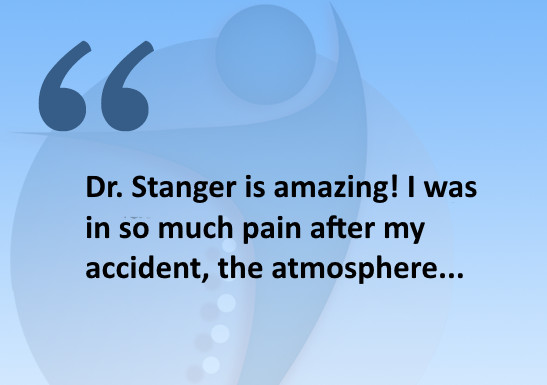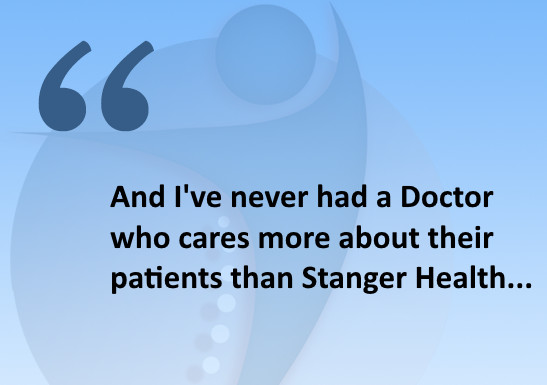
Head Injuries
A head injury is any trauma that leads to injury of the scalp, skull, or brain. The injuries can range from a minor bump on the skull to serious brain injury.
Head injuries are classified as either closed or open (penetrating).
- A closed head injury means you received a hard blow to the head from striking an object, but the object did not break the skull.
- An open, or penetrating, head injury means you were hit with an object that broke the skull and entered the brain. This usually happens when you move at high speed, such as going through the windshield during a car accident. It can also happen from a gunshot to the head.
What causes a head injury?
The most common injuries are from motor vehicle accidents (where the person is either riding as a passenger in the car or is struck as a pedestrian), from violence, from falls, or as a result of child abuse.
Common causes of head injury include traffic accidents, falls, physical assault, and accidents at home, work, outdoors, or while playing sports.
Some head injuries result in prolonged or irreversible brain damage. This can occur as a result of bleeding inside the brain or forces that damage the brain directly. These more serious head injuries may cause:
- Coma
- Chronic headaches
- Loss of or change in sensation, hearing, vision, taste, or smell
- Paralysis
- Seizures
- Speech and language problems
What are the Types of head injuries?
A concussion is a jarring injury to the brain. A person who has a concussion usually, but not always, passes out for a short while. The person may feel dazed and may lose vision or balance for a while after the injury.
- A brain contusion is a bruise of the brain. This means there is some bleeding in the brain, causing swelling.
- A skull fracture is when the skull cracks. Sometimes the edges of broken skull bones cut into the brain and cause bleeding or other injury.
- A hematoma is bleeding in the brain that collects and clots, forming a bump. A hematoma may not be apparent for a day or even as long as several weeks. So it’s important to tell your doctor if someone with a head injury feels or acts oddly. Watch out for headaches, listlessness, balance problems or throwing up.
- A concussion is an injury to the head area that may cause instant loss of awareness or alertness for a few minutes up to a few hours after the traumatic event. The most common type of traumatic brain injury, in which the brain is shaken
- A skull fracture is a break in the skull bone. There are four major types of skull fractures, including the following:
- Linear skull fractures -this is the most common type of skull fracture. In a linear fracture, there is a break in the bone, but it does not move the bone.
- Depressed skull fractures- this type of fracture may be seen with or without a cut in the scalp. In this fracture, part of the skull is actually sunken in from the trauma. This type of skull fracture may require surgical intervention, depending on the severity, to help correct the deformity.
- Diastatic skull fractures – These are fractures that occur along the suture lines in the skull.
- Basilar skull fracture- this is the most serious type of skull fracture, and involves a break in the bone at the base of the skull.
- Intracranial Hematoma (ICH) – A hematoma is bleeding in the brain that collects and clots, forming a bump. A hematoma may not be apparent for a day or even as long as several weeks. So it’s important to tell your doctor if someone with a head injury feels or acts oddly. Watch out for headaches, listlessness, balance problems or throwing up. There are several types of hemotomas, or blood clots, in or around the brain. The different types are classified by their location in the brain. These can range from mild head injuries to quite serious and potentially life-threatening injuries. The different types of ICH include the following:
- Epidural Hematomas occur when a blood clot forms underneath the skull, but on top of the dura, the tough covering that surrounds the brain. They usually come from a tear in an artery that runs just under the skull called the middle meningeal artery. Epidural hematomas are usually associated with a skull fracture.
- Subdural Hematomas occur when a blood clot forms underneath the skull and underneath the dura, but outside of the brain. These can form from a tear in the veins that go from the brain to the dura, or from a cut on the brain itself. They are sometimes, but not always, associated with a skull fracture. A subdural hematoma is a collection of blood on the surface of the brain.
- Subdural hematomas are usually the result of a serious head injury. When one occurs in this way, it is called an “acute” subdural hematoma. Acute subdural hematomas are among the deadliest of all head injuries. The bleeding fills the brain area very rapidly, compressing brain tissue. This often results in brain injury.
- Diffuse axonal injury (DAI)
These injuries are fairly common and are usually caused by shaking of the brain back and forth, which can happen in car accidents, from falls or shaken baby syndrome. Diffuse injuries can be mild, such as with a concussion, or may be very severe, as in diffuse axonal injury (DAI). In DAI, the patient is usually in a coma for a prolonged period of time, with injury to many different parts of the brain.
Symptoms
The symptoms of a head injury can occur immediately or develop slowly over several hours or days. Even if the skull is not fractured, the brain can bang against the inside of the skull and be bruised. The head may look fine, but complications could result from bleeding or swelling inside the skull.
When encountering a person who just had a head injury, try to find out what happened. If he or she cannot tell you, look for clues and ask witnesses. In any serious head trauma, always assume the spinal cord is also injured.
The following symptoms suggest a more serious head injury — other than a concussion or contusion — and require emergency medical treatment:
- Changes in, or unequal size of pupils
- Convulsions
- Distorted features of the face
- Fluid draining from nose, mouth, or ears (may be clear or bloody)
- Fracture in the skull or face, bruising of the face, swelling at the site of the injury, or scalp wound
- Impaired hearing, smell, taste, or vision
- Inability to move one or more limbs
- Irritability (especially in children), personality changes, or unusual behavior
- Loss of consciousness, confusion, or drowsiness
A head injury is any trauma that leads to injury of the scalp, skull, or brain. The injuries can range from a minor bump on the skull to serious brain injury.
Head injuries are classified as either closed or open (penetrating).
- A closed head injury means you received a hard blow to the head from striking an object, but the object did not break the skull.
- An open, or penetrating, head injury means you were hit with an object that broke the skull and entered the brain. This usually happens when you move at high speed, such as going through the windshield during a car accident. It can also happen from a gunshot to the head.
What causes a head injury?
The most common injuries are from motor vehicle accidents (where the person is either riding as a passenger in the car or is struck as a pedestrian), from violence, from falls, or as a result of child abuse.
Common causes of head injury include traffic accidents, falls, physical assault, and accidents at home, work, outdoors, or while playing sports.
Some head injuries result in prolonged or irreversible brain damage. This can occur as a result of bleeding inside the brain or forces that damage the brain directly. These more serious head injuries may cause:
- Coma
- Chronic headaches
- Loss of or change in sensation, hearing, vision, taste, or smell
- Paralysis
- Seizures
- Speech and language problems
What are the Types of head injuries?
A concussion is a jarring injury to the brain. A person who has a concussion usually, but not always, passes out for a short while. The person may feel dazed and may lose vision or balance for a while after the injury.
- A brain contusion is a bruise of the brain. This means there is some bleeding in the brain, causing swelling.
- A skull fracture is when the skull cracks. Sometimes the edges of broken skull bones cut into the brain and cause bleeding or other injury.
- A hematoma is bleeding in the brain that collects and clots, forming a bump. A hematoma may not be apparent for a day or even as long as several weeks. So it’s important to tell your doctor if someone with a head injury feels or acts oddly. Watch out for headaches, listlessness, balance problems or throwing up.
- A concussion is an injury to the head area that may cause instant loss of awareness or alertness for a few minutes up to a few hours after the traumatic event. The most common type of traumatic brain injury, in which the brain is shaken
- A skull fracture is a break in the skull bone. There are four major types of skull fractures, including the following:
- Linear skull fractures -this is the most common type of skull fracture. In a linear fracture, there is a break in the bone, but it does not move the bone.
- Depressed skull fractures- this type of fracture may be seen with or without a cut in the scalp. In this fracture, part of the skull is actually sunken in from the trauma. This type of skull fracture may require surgical intervention, depending on the severity, to help correct the deformity.
- Diastatic skull fractures – These are fractures that occur along the suture lines in the skull.
- Basilar skull fracture- this is the most serious type of skull fracture, and involves a break in the bone at the base of the skull.
- Intracranial Hematoma (ICH) – A hematoma is bleeding in the brain that collects and clots, forming a bump. A hematoma may not be apparent for a day or even as long as several weeks. So it’s important to tell your doctor if someone with a head injury feels or acts oddly. Watch out for headaches, listlessness, balance problems or throwing up. There are several types of hemotomas, or blood clots, in or around the brain. The different types are classified by their location in the brain. These can range from mild head injuries to quite serious and potentially life-threatening injuries. The different types of ICH include the following:
- Epidural Hematomas occur when a blood clot forms underneath the skull, but on top of the dura, the tough covering that surrounds the brain. They usually come from a tear in an artery that runs just under the skull called the middle meningeal artery. Epidural hematomas are usually associated with a skull fracture.
- Subdural Hematomas occur when a blood clot forms underneath the skull and underneath the dura, but outside of the brain. These can form from a tear in the veins that go from the brain to the dura, or from a cut on the brain itself. They are sometimes, but not always, associated with a skull fracture. A subdural hematoma is a collection of blood on the surface of the brain.
- Subdural hematomas are usually the result of a serious head injury. When one occurs in this way, it is called an “acute” subdural hematoma. Acute subdural hematomas are among the deadliest of all head injuries. The bleeding fills the brain area very rapidly, compressing brain tissue. This often results in brain injury.
- Diffuse axonal injury (DAI)
These injuries are fairly common and are usually caused by shaking of the brain back and forth, which can happen in car accidents, from falls or shaken baby syndrome. Diffuse injuries can be mild, such as with a concussion, or may be very severe, as in diffuse axonal injury (DAI). In DAI, the patient is usually in a coma for a prolonged period of time, with injury to many different parts of the brain.
Symptoms
The symptoms of a head injury can occur immediately or develop slowly over several hours or days. Even if the skull is not fractured, the brain can bang against the inside of the skull and be bruised. The head may look fine, but complications could result from bleeding or swelling inside the skull.
When encountering a person who just had a head injury, try to find out what happened. If he or she cannot tell you, look for clues and ask witnesses. In any serious head trauma, always assume the spinal cord is also injured.
The following symptoms suggest a more serious head injury — other than a concussion or contusion — and require emergency medical treatment:
- Changes in, or unequal size of pupils
- Convulsions
- Distorted features of the face
- Fluid draining from nose, mouth, or ears (may be clear or bloody)
- Fracture in the skull or face, bruising of the face, swelling at the site of the injury, or scalp wound
- Impaired hearing, smell, taste, or vision
- Inability to move one or more limbs
- Irritability (especially in children), personality changes, or unusual behavior
- Loss of consciousness, confusion, or drowsiness
Call Now For More Information About
Stanger Injury Treatment Centers
Get Your Free Consultation
Get Your Free Consultation
READ OUR PATIENT TESTIMONIALS
Auto Accident Victims Discover Personal Recovery Success
Auto Accident Victims Discover Personal Recovery Success






